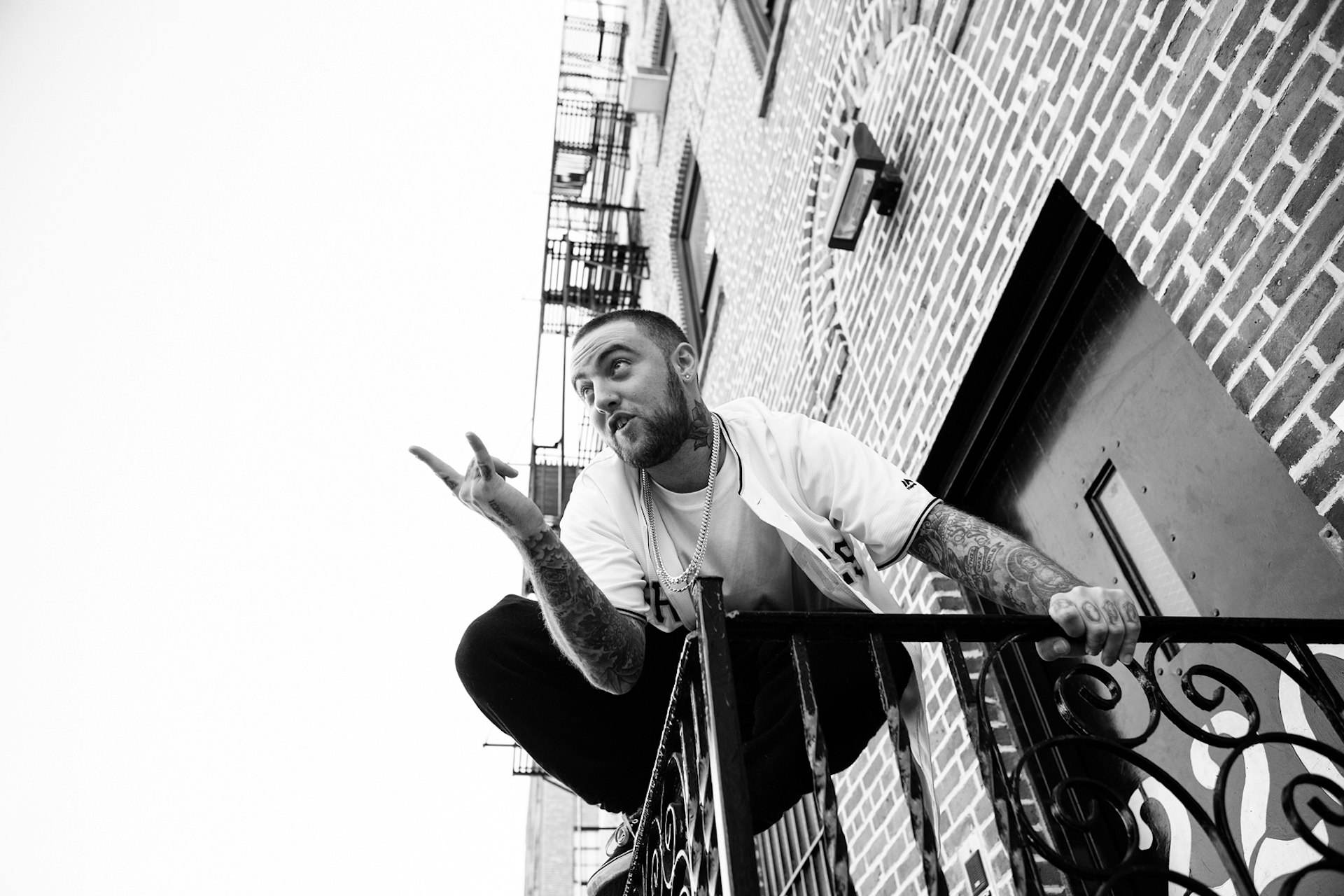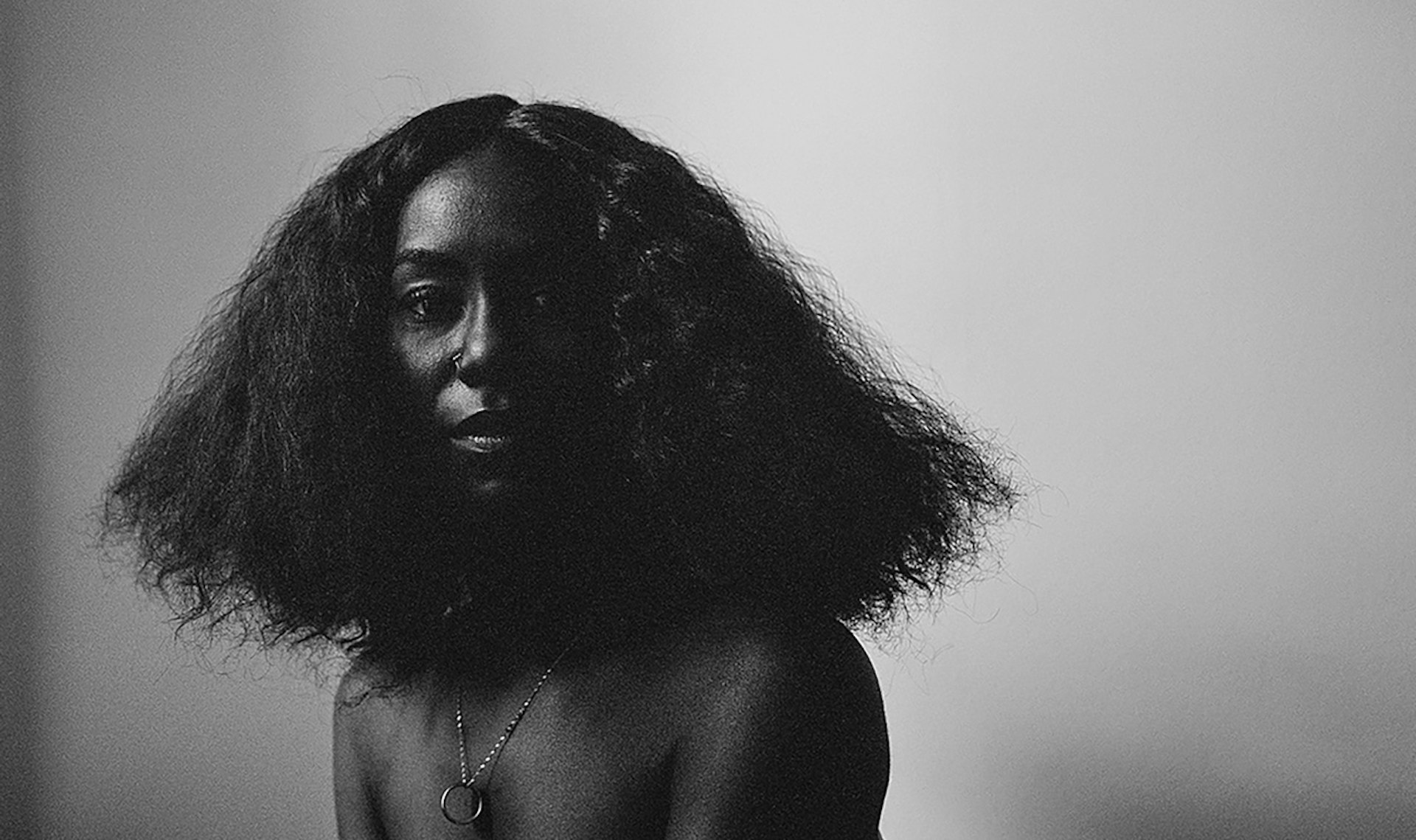
We've made an all-woman photography issue. This is why.
- Text by Daniella Zalcman
- Photography by Various. (Main image: Yumna Al-Arashi)
There’s a well-known poster by the anonymous art group Guerrilla Girls that reads, “Do women have to be naked to get into the Met Museum?”
Beneath these words lies a reclining woman – an homage to Jean-Auguste-Dominique Ingres’ Odalisque, only her face is hidden by one of the group’s signature gorilla masks – alongside some smaller text that rams the point home. “Less than five per cent of the artists in the modern art sections are women, but 85 per cent of the nudes are female.”
That poster dates back to 1989, but the figures haven’t changed. Work by women still only constitutes three to five per cent of major permanent collections across the US and Europe. And photography, the most modern of representative art forms, has done little to distinguish itself from the centuries of Botticelli, Klimt and Picasso that precede it.
Photography is sold as a vehicle for truth. It is meant to be a mirror, an indisputable depiction of whatever the camera captures. But the reality is that there’s a galaxy of decisions that any photographer can make in the creation of an image – consciously or otherwise – that reflect more on the photographer and their experiences than what surrounds them.

Habiba in the suburbs of Tunis. Photo by Yumna Al-Arashi.
Roughly 85 per cent of working photojournalists today are men. That means that a disproportionate amount of the news imagery we consume, whether it’s of war or sports or politics or fashion, is framed and filtered through the masculine experience.
There are many reasons why this is dangerous. Photographs don’t just tell us stories, they tell us how to see. So when representations of womanhood, the female body or femininity are largely constructed by men, it’s not just that they define us, they teach us how to see ourselves.
What, then, happens when society’s mirrors are overwhelmingly wielded by one demographic? How do you subvert generations of misogyny and sexism that have been quietly embedded into our visual DNA? And what does it mean to reclaim ownership of our own image?
One argument is that the mere act of existing as a countercultural presence in the documentary photography community constitutes resistance, but here are some voices for whom the act of rebuilding classic narratives feels more deliberate.
American photographer Haley Morris-Cafiero didn’t originally set out to examine the public gaze on the female body – specifically, her body – but when she took a closer look at some self-portraits she’d taken in New York, she noticed that a man captured in the frame was “sneering” at her.
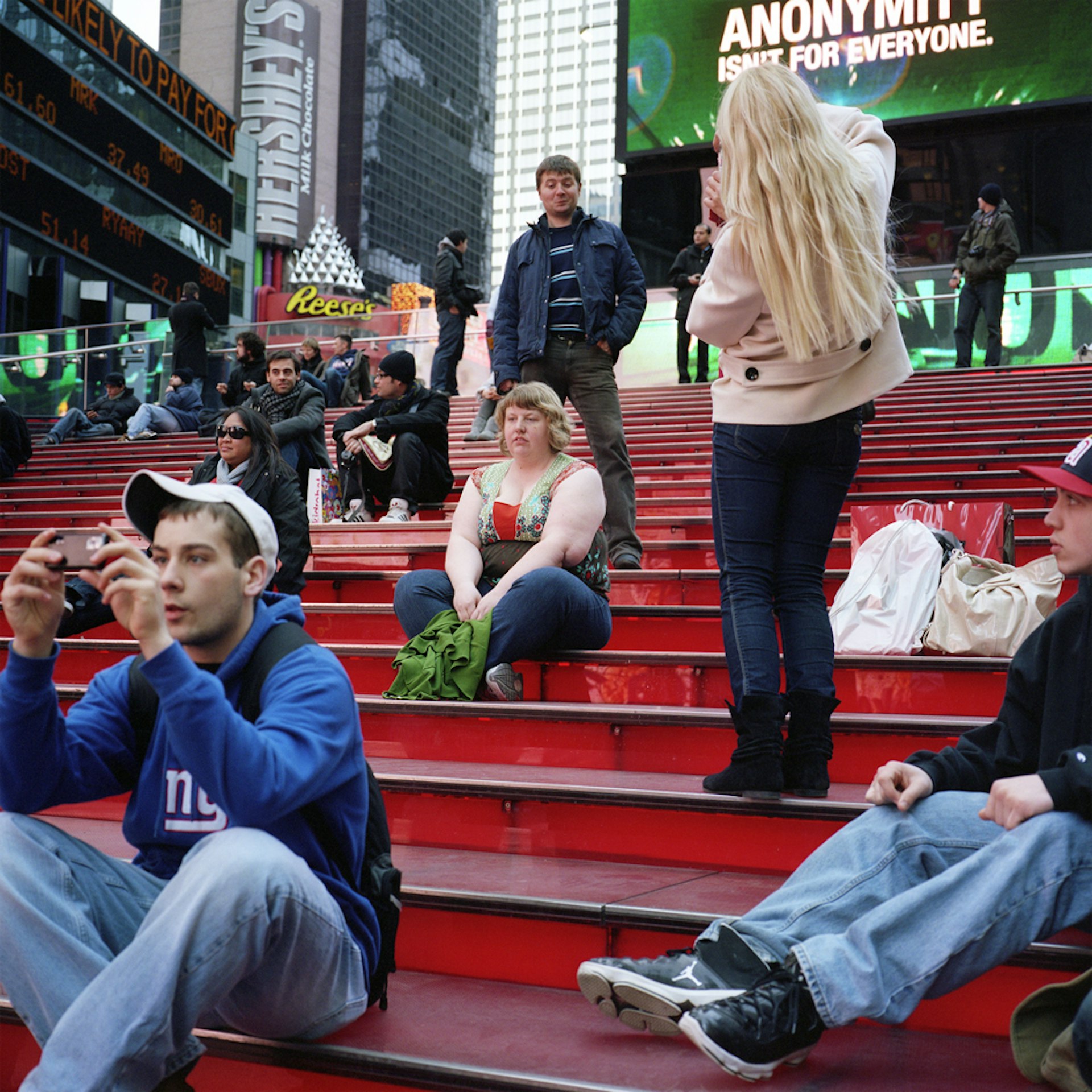
Anonymity Isn’t for Everyone, from the series Wait Watchers by Haley Morris-Cafiero.
That led to her project Wait Watchers, where she would set up a camera and systematically photograph herself in public spaces. The selected images show the fleeting expressions of passersby while Morris-Cafiero is, in the moment, unaware.
“I do not know what the people in the photographs are thinking or reacting to,” says Morris-Cafiero. “But I take that microsecond in time and present it to the world in order to start a conversation about the gaze and how we use it as a tool to communicate our opinions of others. We also determine our self-worth by how others look at us.”
These images make for difficult viewing: the unkind expressions directed at Morris-Cafiero range from mocking to disgusted. But the power of this work is that they also force the viewer into an involuntary introspection: as we look at strangers looking at Haley, we have to wonder if we judge others that way, or if that is how strangers judge us.
It’s important to remember that whatever women have suffered at the hands of a predominantly white and male photography corps, there is perhaps no group more robbed of their own narrative than women of colour.
Beyond the objectification and flattening of womanhood, you’ll find layers of colonialism, racism and white supremacy that continue to plague the ways in which their stories are told.
Yumna Al-Arashi is a Yemeni-American photographer whose work is often a direct examination of her own identities. Her projects regularly involve an unflinching view of the naked female form – sometimes soft, sometimes defiant, but always real and unashamed.

Silence of the Sirens by Yumna Al-Arashi.
Another series, Northern Yemen, positions Yemeni women in hijab against stark, dramatic landscapes. They stand, powerful and slightly mysterious, in poses that others have likened to a superhero’s stance.
“Men and women alike often assume that a woman who is covered is oppressed, has no view or feeling or strength,” says Al-Arashi. “They often allow those notions to treat the women as such, especially in photojournalism. Shouldn’t we be listening to them? Shouldn’t we be taking the time to ask them questions rather than letting their garments and our skewed gaze speak for them?”
That’s exactly what North Carolina-based photographer Endia Beal does with her project Am I What You’re Looking For? Beal presents a series of black women in their twenties about to enter the workforce for the first time, photographed against a backdrop that shows the most mundane of American office spaces.
She asks them to dress in professional attire, then essentially leads them through the job interview process in an exploration of their own identity – as well as the implications of being a black woman conforming to mainstream (read: white) notions of professionalism in corporate America.
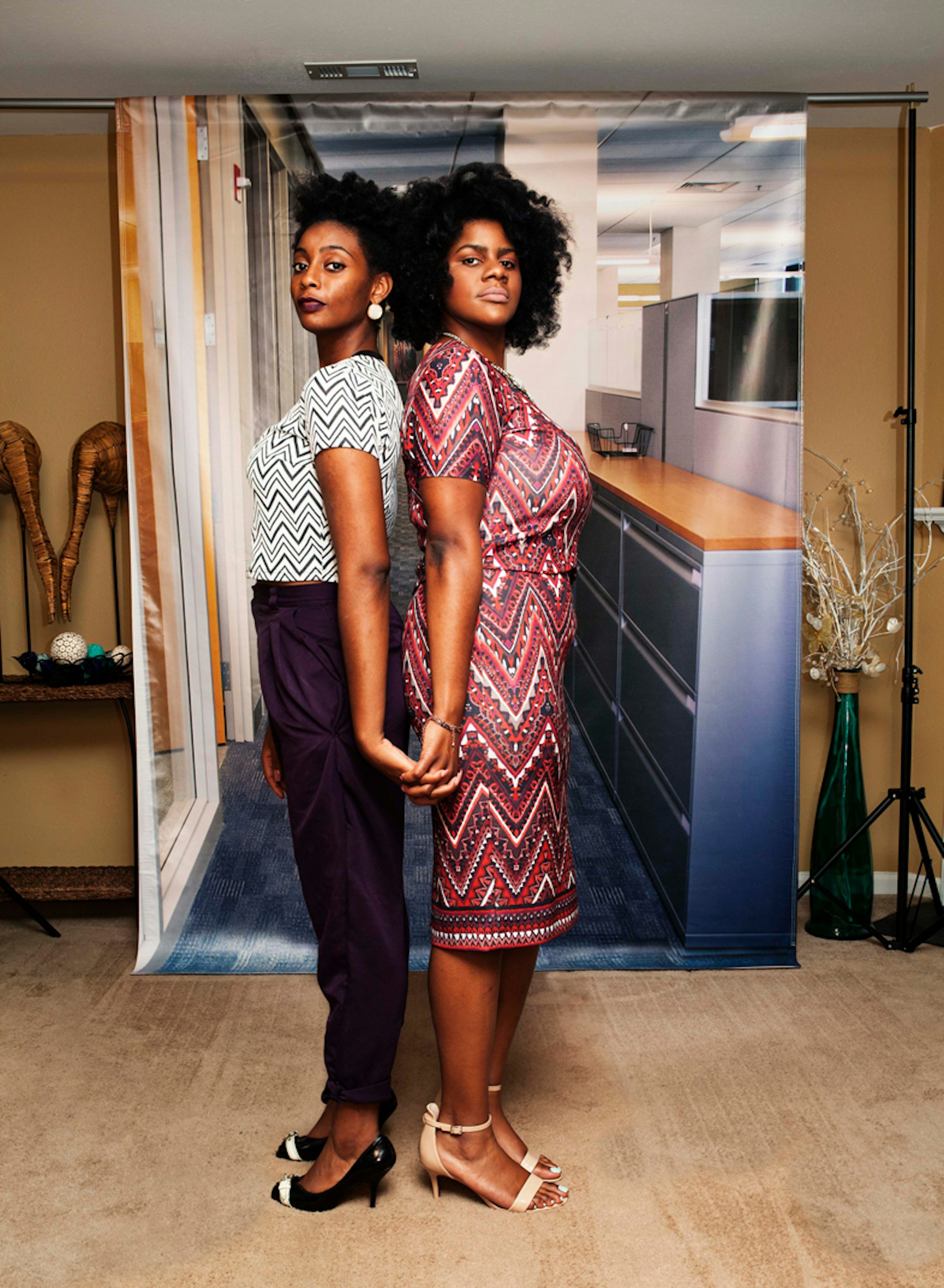
Kyandra and Shakiya, from the series Am I What You’re Looking For? by Endia Beal.
Photography can often be the perfect medium onto which we can project our own worldviews, however flawed. But there’s little room to stereotype the women in these portraits, to make judgements about their hair, their clothing or their nails – because through Am I What You’re Looking For? these women are challenging us to look beyond.
Apsáalooke (Native American) photographer Wendy Red Star takes a slightly more confrontational approach to the way in which Indigenous women have historically been seen. In her project White Squaw, she inserts herself into a series of smutty historical fiction paperback covers from the 1980s with titles like Redskin Rosebud and Hot-Handed Heathen.
They are as hilarious as they are satirical. Red Star rolls her eyes, picks her nose with a feather and licks the edge of a tomahawk in her re-staged versions, as if to remind us that these antics are no more ridiculous than the racist, hypersexualised originals.
Documentary photography has routinely been a fundamentally colonial art form, predicated on the notion that we in the West are better equipped to tell the stories of “the other” than they are. But with Red Star’s work, the depiction is in the control of an Indigenous woman, who pointedly asks us to consider how art and photography have consistently misrepresented Indigenous identity.
Women photographers are easily pigeonholed into photographing “women’s issues” – focusing on women’s health, girls coming of age or women from conservative communities who might otherwise be inaccessible to male photographers. That act of women seeing other women is vital, but it should not mark the boundaries of their work.
The female gaze needs to touch everything: not just because any human story you can possibly imagine affects women, but also because it’s crucial for women to use their position in society to consider masculinity and the role men play in women’s lives.
In 2012, Hannah Price moved from Rochester to Philadelphia – having grown up in Colorado – and was suddenly taken aback by the frequency with which she was being catcalled and harassed on the streets of her new home.
So she started a series called City of Brotherly Love, where she photographed the catcallers she encountered – sometimes in the moment, sometimes after – asking their permission to make a photo. The images are straightforward and devoid of judgment: simply the product of the artist looking back.
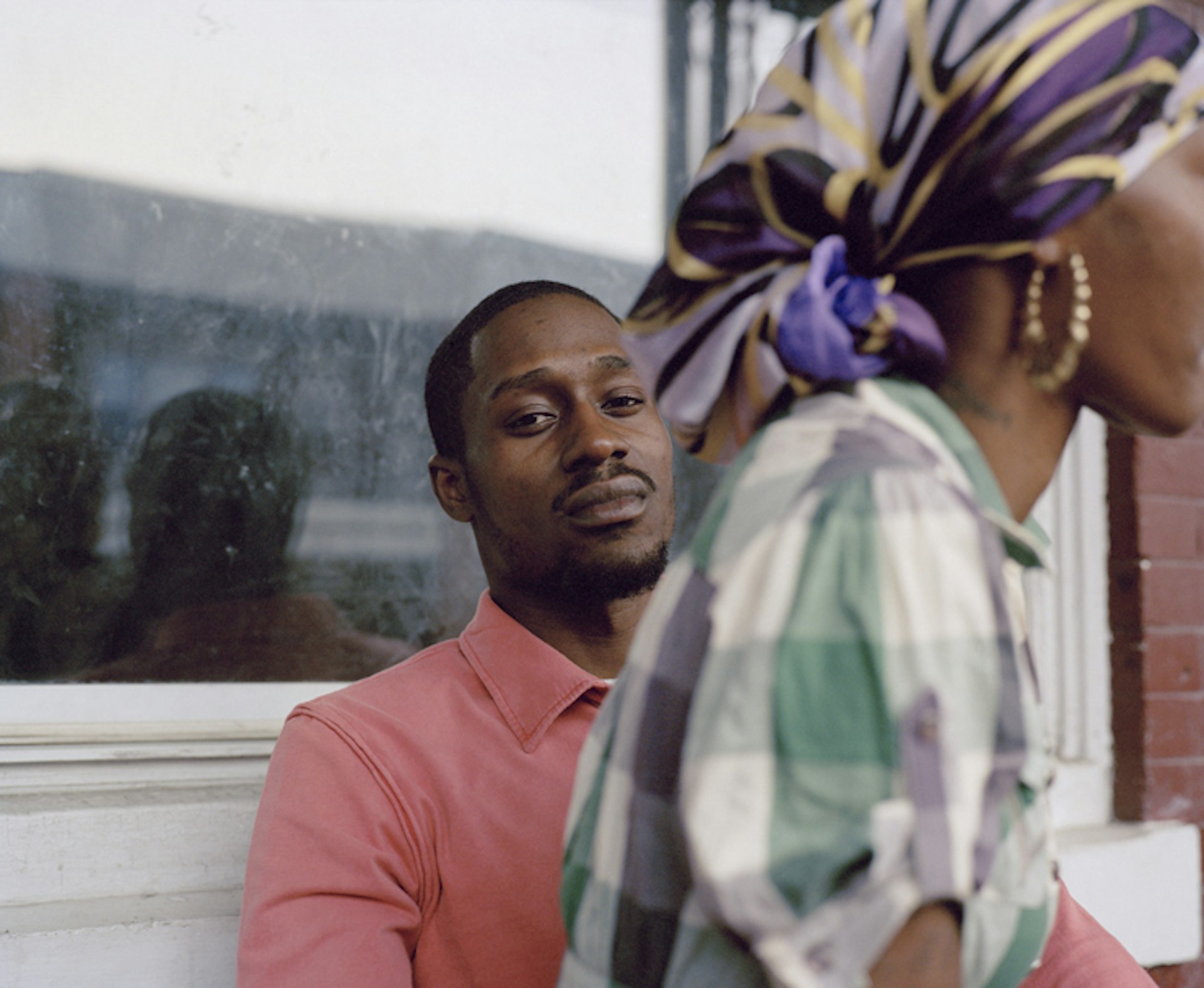
Hasan, West Philly, from the series City of Brotherly Love by Hannah Price.
“I wanted them to know what it felt like to feel vulnerable with a stranger but, at the same time, humanise our encounter,” says Price.
“To intentionally subvert the gaze of a male means that I am gaining back my power, instead of letting a man say and do what he wants to me or generalise an image of the female. What this all means is that there’s more than just one perspective on life and society. There are a diverse number of ways people grow, see and look. It’s not just about the male perspective anymore.”
Another twist on the standard narrative can be found in Cristina de Middel’s project Gentlemen’s Club, where the photographer set out to document men who patronise sex workers in Rio de Janeiro. Sex work, like drug addiction, is a subject that is photographed widely and often in a predictably monotone way.
Women are shown as being oppressed, and the populations most often photographed are frequently coping with that oppression on several fronts: they’re transgender, underaged, victims of trafficking. Those images are necessary as well – but all too often, they mask or protect the identity of the men responsible for driving the darkest iterations of this industry.

A patron of sex workers in Havana, Cuba, from the series Gentlemen’s club by Cristina de Middel.
Gentlemen’s Club, like City of Brotherly Love, is effective in part because of its simplicity and lack of judgement. De Middel asked her subjects to pose for her in exchange for money, then included details of their history with sex workers in the captions:
Newton, 43 years old. DJ. Single and father of 3 children. He visits a prostitute 2 or 3 times a week and he pays 16 euros per session. He started visiting prostitutes when he was 22 and he keeps doing it because he believes that he’s not hurting anyone, it’s fun, there are no emotions involved and it’s simply a commercial transaction.
It’s a simple concept, indistinguishable in execution from any number of other portrait projects that are accompanied by typical interview excerpts.
But it feels revolutionary – if only because we almost never see the men behind sex work, whether the interaction is safe and consensual or disturbing and manipulative. How often do we think to refocus our gaze on the people who make up half of this transaction?
Photography, in so many ways, comes down to power – and it’s all too easy to photograph the disempowered. Maybe that’s why so many of those naked women painted by men in the Met Museum have come into being: create an image of something as you want it to be, and you fool your audience into believing your version of reality.
Photography isn’t much different. Show women as helpless, in mourning, oppressed, victimised… and that is how we will be seen by the world.
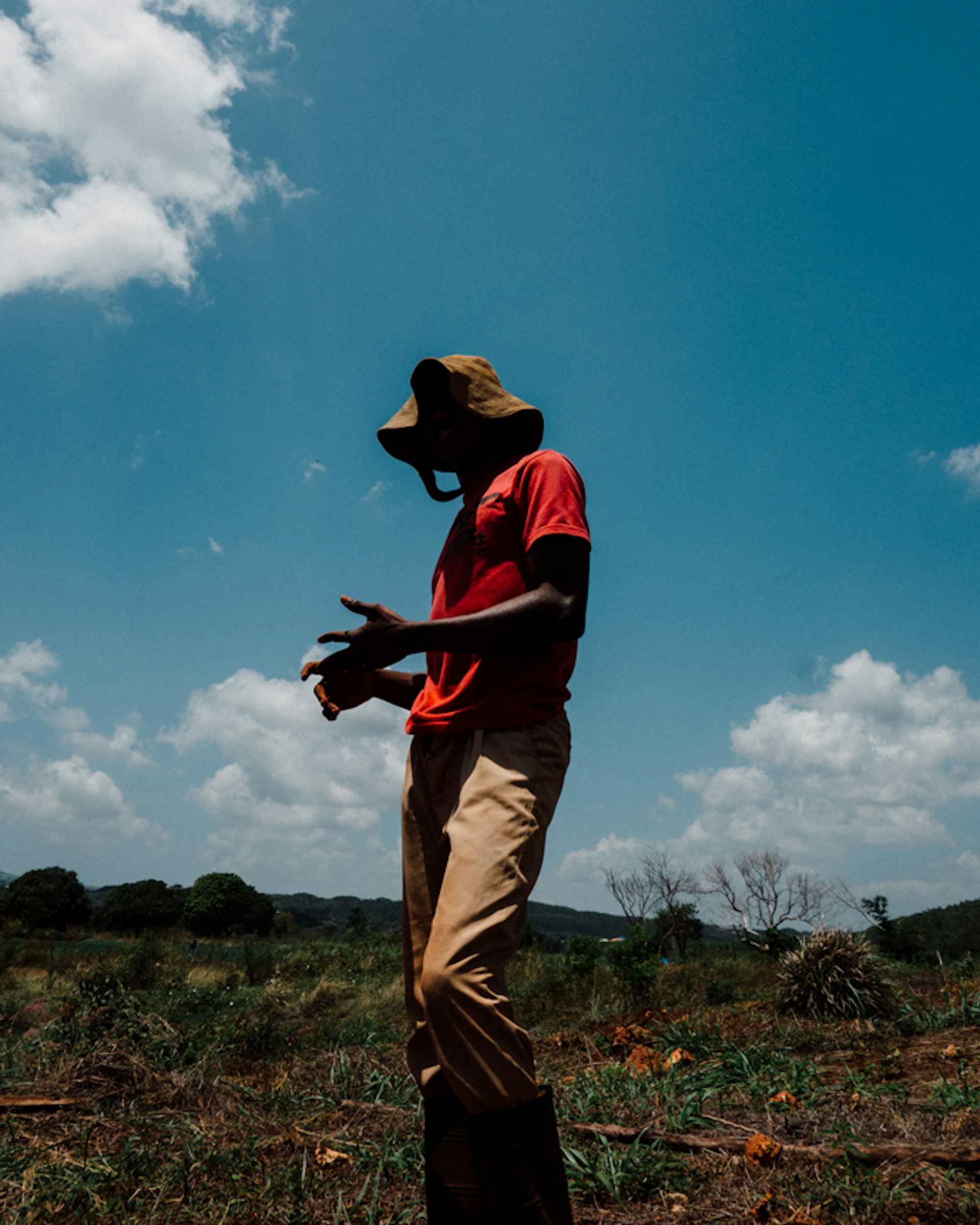
An agricultural student gaining practical experience through Farm Up Jamaica’s ‘Young Soldiers for Food Security’ campaign. Photo by Yumna Al-Arashi.
It’s perhaps this flaw of photography – the fact that documentarians so often choose to represent people who are “other” – which has increasingly encouraged photographers (arguably disproportionately women photographers) to work collaboratively with the people whose stories they are trying to tell.
Take German photographer Charlotte Schmitz, whose project La Puente brings us into the largest brothel in southern Ecuador. Her instant photos of the women who work there are entirely informed by how they want to see themselves and be seen by others: from the posing of the portraits to the way in which each woman modifies her photograph with nail polish – sometimes as adornment, sometimes as a way to mask identity.
“During my studies in photojournalism, I was taught to be invisible,” says Schmitz. “But I always knew I wanted the contrary: to be present. Working directly with the people I photograph gives me this possibility.”
No photographer is truly invisible in their work – but ceding some artistic control to those whose stories we aim to tell, turning subject into collaborator, could be one way to merge the visions of those who see, and those who are being seen.
All of these bodies of work – several of which would not be considered journalism, or even factual imagery – are a response to the failure of decades of straight, representational photography.
They allow us to see where we have gone wrong; what happens when we allow those who have historically held power to shape how we see ourselves, and how we remember our own stories.
Documentary photography needs a revolution. While we have been trained to think of our work as an exercise in nonfiction – as a representation of fact – truth is more subjective than we believe it to be.
The way others see us, and the way we see ourselves, are not always aligned. This rift, which is both significant and dangerous, can only be rectified when the community creating the images we consume reflects the diversity of our planet.
This article appears in Huck 67 – The Documentary Photography Special VI. Buy it in the Huck Shop or subscribe now to never miss another issue.
Daniella Zalcman is a documentary photographer and founder of Women Photograph, a platform working to elevate the voices of women and non-binary visual journalists.
Enjoyed this article? Like Huck on Facebook or follow us on Twitter.
